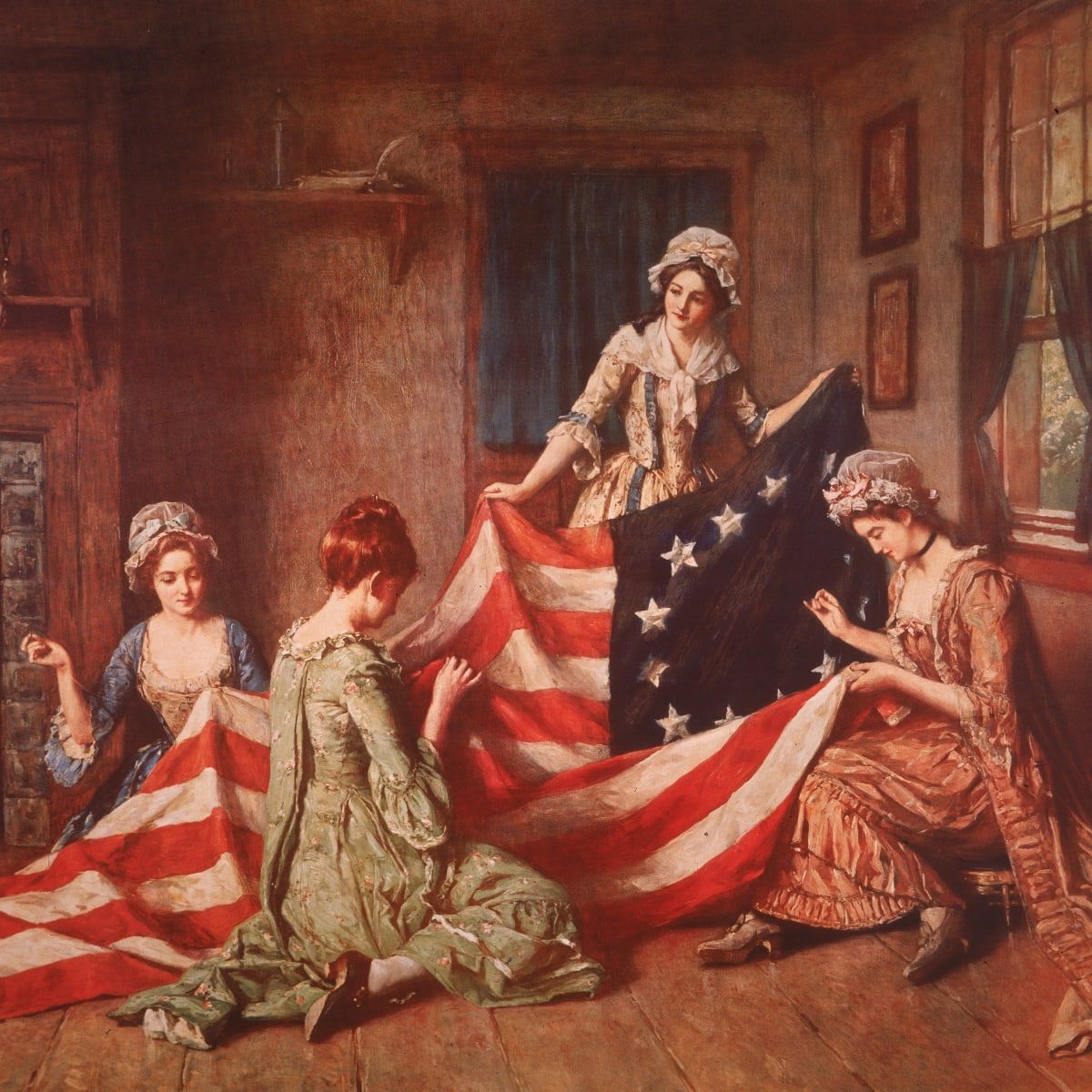Besty Ross
The Red and White Stripes meaning 13 colonies, the white stars in the blue square of the flag that represent all 50 states of america, but did you know that the First American Flag had only 13 stars on its flag, well back in the late 1700s it did, and the person who sew the first american flag was Betsy Ross, so let's about the woman behind the first american flag from The Revolution Section from Story of America Cards.
(Who is Besty Ross?)
Besty Ross also known as Elizabeth Griscom Ross, who was an American upholsterer who was credited by her relatives in 1870 with making the first American flag, which is known as the Betsy Ross flag.
Which is an early design for the flag of the United States, and she was the one who made it during the conformant to the Flag Act of 1777.
(The Making of The First American Flag)
When the "Stars and Stripes" were officially adopted for the new American Flag on June 14th 1777, by the Continental Congress, it was described as "thirteen stripes, alternate red and white, with a union of thirteen stars on a blue field, representing a new constellation".
The stars were arranged sometimes in a circle, more often in rows.
According to tradition, the person who sewed together the first united states flag was Besty Ross, although there no definite proof of this exists, there is enough evidence available to historians to believe that is she did indeed make the first flag, the picture usually painted of a demure young girl bending industriously over needlework may be somewhat less accurate, however.
Besty Ross was in fact, independent (she was cast out of Quaker meetings for eloping), high spirited, (she married three times), and an astute business woman (she ran her own upholstery business).
Besty Griscom (Ross) was born in Philadelphia, Pennsylvania on New Year's Day of 1752.
After attending a Quaker school, she was banned from attending Quaker meeting in 1774 because she had eloped with John Ross, an upholsterer, According to Quaker beliefs, she should be married in their meetinghouse, 3 years after the marriage, John Ross joined the Revolutionary army and was killed in a gunpowder explosion.
His widow carried on alone in upholstery business, and shortly thereafter George Washington and Robert Morris, a Philadelphian, apparently asked Besty Ross to make the first flag, following the basic design described by the special Congressional committee set up for that purpose.
This Information was first made public by Besty Ross's descendant William Canby, at a meeting of the Historical Society of Pennsylvania in March 1870.
The Records of Pennsylvania's Navy Board do show that making flags was part of Besty Ross's Business and that on May 29th 1777, she was paid 14 pounds for doing so, That same year Besty Ross married a navy man by the name of Captain Joseph Ashburn. But he was captured at sea and died later in a British prison, Besty Ross was informed about her second husband's death by an old Family friend, John Clayoole, who had been imprisoned in the British Prison with Ashburn.
Ross then married Clayoole in 1783, and they remained together until Clayoole death in 1817, Flagmaker Betsy Ross had died in Philadelphia on January 30th 1836 at the age of 84.
(Legacy of The Flagmaker)
The so-called Betsy Ross House is a popular tourist site in Philadelphia, but it is still a matter of historical academic dispute whether she actually lived there or not, as evidence indicates she actually lived from 1776 to 1779 in a house next door that was torn down after the remaining house was designated.
Ross's body was first interred at the Free Quaker burial grounds on North Fifth Street in Philadelphia. But In 1856, the remains of Ross and her third husband John Claypoole were moved from the Free Quaker Burying Ground to Mount Moriah Cemetery. The practice of cemeteries purchasing the remains of famous historical individuals was common in order to drive additional business. The Daughters of the American Revolution erected a flagpole at the site of her grave in her memory.
And In 1975, in preparation for the American Bicentennial, city leaders ordered the remains moved to the courtyard of the Betsy Ross House. However, cemetery workers found no remains beneath her tombstone. Bones found elsewhere in the family plot were deemed to be hers and were reinterred in the current grave visited by tourists at the Betsy Ross House
There is also The Betsy Ross Bridge, connecting Philadelphia with Pennsauken Township, New Jersey, across the Delaware River is named in her honor.
Biographer Marla Miller has argued that Ross's legacy should not be about a single flag, but rather because of what her story tells us about working women and men during the American Revolution.
(Ending)
And that is the History of Betsy Ross told from the Story of America Card, I hope you enjoy this and in learning about Betsy Ross, and I'll see you next time when I make another one.

Bạn đang đọc truyện trên: AzTruyen.Top